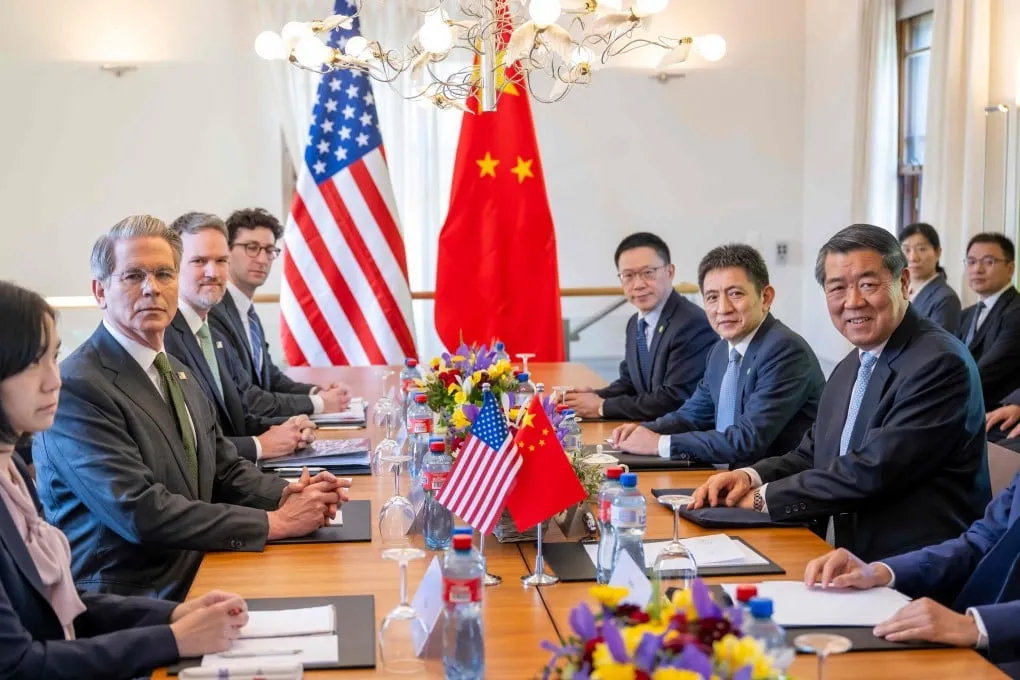In 2025, the U.S.–China trade war has moved beyond tariffs and talking points to become a central concern shaping American political life, economic policy, and public anxiety. What once began as a dispute over steel, intellectual property, and trade imbalances has evolved into a full-blown confrontation involving technology, national security, and even ideology. The American public now faces a complex mix of fears—some rooted in economic survival, others in geopolitical uncertainty—as the rivalry intensifies.
The Trade War Reignited
The relationship between the United States and China has once again become more strained since Donald Trump took office again.Tariffs have not only returned—they’ve expanded. Chinese semiconductors, rare earth metals, electric vehicles, and solar panels are facing new import restrictions. In return, China has imposed retaliatory tariffs on American agricultural goods, aerospace components, and financial services.
The new tariffs have been framed by the administration as part of a broader strategy to reassert U.S. manufacturing dominance and reduce dependency on Chinese supply chains. However, for many Americans, the consequences are already being felt at the grocery store, in consumer electronics, and in the job market. Prices are rising, tensions are escalating, and uncertainty looms.
American Economic Anxiety
One of the biggest fears gripping Americans in 2025 is the fear of economic stagnation or decline. Many goods’ affordability and availability have been impacted by the trade war.Electronics, vehicles, and even pharmaceuticals—many of which depend on Chinese components—are becoming more expensive. Some items are facing supply shortages altogether.
Small businesses are especially vulnerable. Many rely on Chinese parts or manufacturing partners and now face increased costs and tighter margins. Consumers, too, are seeing price spikes in everyday products, prompting fears of inflation’s return, even as interest rates remain volatile.
In states dependent on agriculture or global exports, the fears are even more pronounced. China has reduced purchases of American soybeans, beef, and dairy. Rural communities are seeing a repeat of the 2018–2019 economic strain, and there’s growing concern that support from federal relief packages may not last.

National Security & Tech Dominance
Beyond economic pressures, Americans are growing concerned about national security and technological supremacy. The U.S. government has imposed further restrictions on Chinese tech companies, banning imports of certain AI chips and telecom equipment. Chinese platforms are being pushed out of U.S. markets under the banner of national security, surveillance risks, and foreign influence.
China has responded by speeding the development of domestic alternatives to the United States and stepping up its own tech independence drive.software and hardware. Americans fear the emergence of a bifurcated global internet, one led by U.S. platforms, the other by China. This digital decoupling has major implications, not just for business, but for global influence and control over innovation.
As the race for AI dominance continues, there’s also public unease over whether the U.S. can keep up. American investments in AI and semiconductors have surged, but concerns linger that Chinese firms, supported by state subsidies, may outpace their U.S. counterparts in scale, speed, and application.
Fear of Escalation and Global Conflict
Another growing fear is the possibility of the trade war evolving into something worse: a military or geopolitical conflict. The dispute over Taiwan remains an ever-present flashpoint, and with rising tensions in the South China Sea, Americans are increasingly worried about being drawn into a military standoff.
Public opinion polls show a sharp increase in concerns over Chinese cyberattacks, espionage, and intellectual property theft. Many fear that economic warfare could spill over into digital warfare or military provocation. There is a pervasive sense that the line between trade war and cold war is getting thinner by the day.
At the same time, there’s skepticism about whether Washington and Beijing can de-escalate. Diplomatic channels remain open, but trust is low. Trade talks often stall, and both nations appear more committed to outlasting the other than to finding common ground.
Polarization in American Politics
Domestically, the U.S.–China rivalry has become a highly polarized issue. Some Americans support the hardline stance, believing it protects national interests, rebuilds domestic manufacturing, and challenges unfair trade practices. Others view the strategy as reckless—disrupting markets, harming consumers, and alienating allies.
This divide plays out sharply along party lines. Republican leaders largely back Trump’s aggressive trade posture, while many Democrats call for a multilateral approach involving allies and more focus on human rights. However, there is bipartisan agreement on one point: China is a strategic competitor that must be addressed.
For voters, this has led to an increase in economic nationalism and suspicion of globalization. “Buy American” campaigns are back in full force, but some citizens question whether protectionism can truly reverse decades of economic integration.
Fears About Everyday Life
At the individual level, fears are less abstract and more personal. Americans worry about:
- Job security in industries affected by shifting supply chains
- Cost of living increases due to disrupted imports
- Access to tech and medicine, especially in rural or underserved communities
- Cybersecurity threats to banking, utilities, and personal data
- A future shaped by AI and automation, especially if China leads in innovation
These are not just policy issues—they are kitchen table concerns. They influence voting behavior, financial decisions, and even career planning.
What Comes Next?
In 2025, the U.S.–China trade war is more than just an economic disagreement—it is a defining element of modern geopolitics, shaping how Americans view the world and their place within it. Whether it leads to greater resilience or greater risk is still uncertain.
Some analysts believe the conflict will push the U.S. toward technological reinvention and energy independence. Others warn that without cooperation, both countries may face stagnation, instability, and global fragmentation.
The American public, caught in the middle, continues to weigh hope against fear.
Conclusion
The U.S.–China trade war in 2025 represents more than tariffs or tech bans—it reflects a profound shift in how Americans see their future. With growing concerns over economic security, technological leadership, geopolitical tension, and political division, this conflict has become deeply personal.
What Americans fear is not just that China will “win,” but that in trying to beat China, the U.S. might lose sight of the values and stability it seeks to protect. In an era of disruption and division, that fear is as powerful as any policy.
FAQs: U.S.–China Trade War and American Concerns in 2025
1. What is the current state of the U.S.–China trade war in 2025?
In 2025, the trade war between the U.S. and China has intensified. Tariffs have expanded, restrictions on tech imports and exports have increased, and diplomatic relations are tense. Both countries are focused on economic decoupling, particularly in high-tech industries like semiconductors, AI, and green energy.
2. Why are Americans worried about the trade war?
Americans are concerned about rising prices, job security, supply chain disruptions, and the possibility of a deeper geopolitical conflict. The trade war is no longer just about economics—it affects national security, technology access, and even everyday consumer goods.
3. How is the trade war affecting the U.S. economy?
Tariffs on Chinese goods have led to higher prices for electronics, vehicles, and many everyday items. Farmers and exporters are suffering due to retaliatory tariffs from China. Small businesses relying on Chinese imports face cost increases, and some sectors are experiencing job losses or relocation pressures.
4. Is the U.S. becoming more independent from Chinese manufacturing?
Yes, there’s a strong push for domestic manufacturing and supply chain “reshoring.” The U.S. government is investing in semiconductor plants, rare earth mining, and tech hubs. However, full independence is difficult, and the transition is costly and time-consuming.
5. How are tech companies impacted by the trade tensions?
Tech firms are caught in the middle. Export restrictions on AI chips and software to China limit market access, while import controls raise costs for U.S. manufacturers. Companies are also under pressure to remove Chinese components from their products and reconfigure supply chains.







